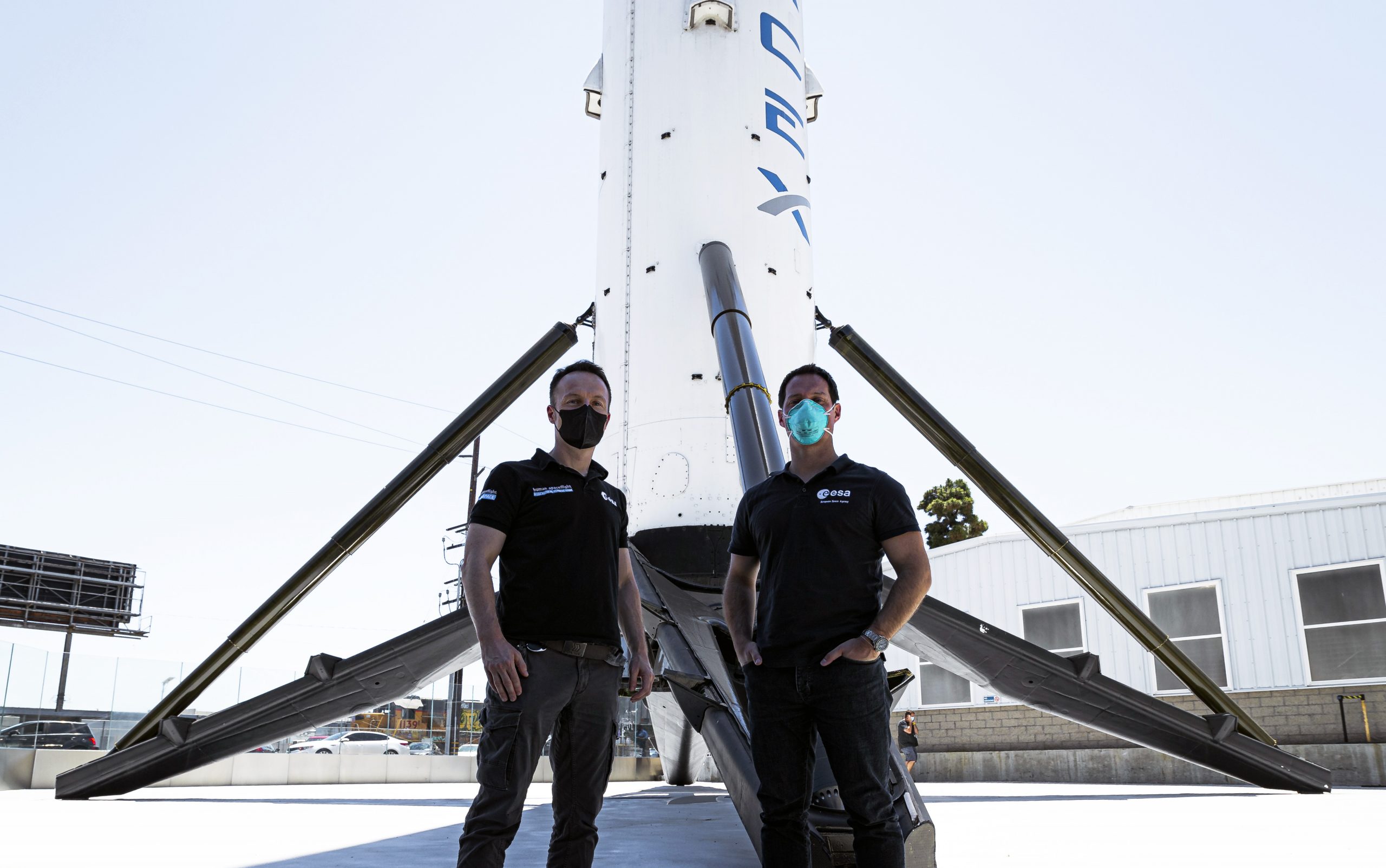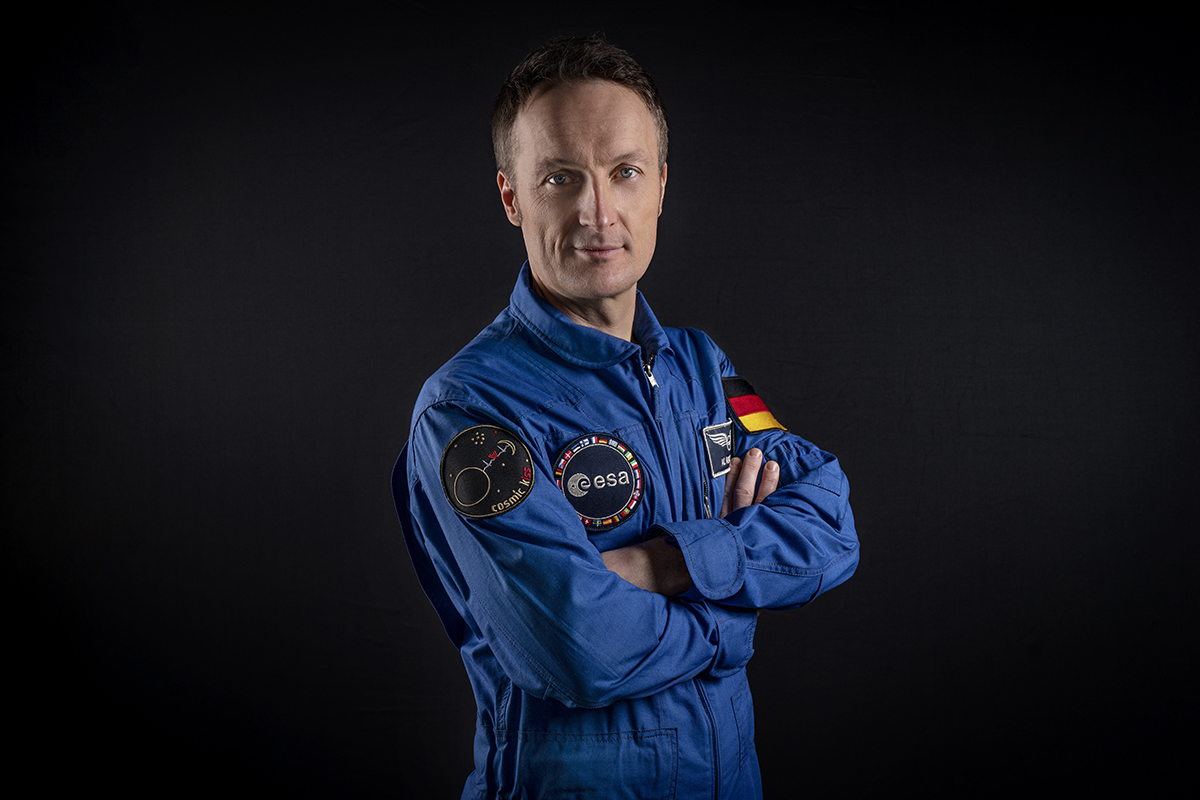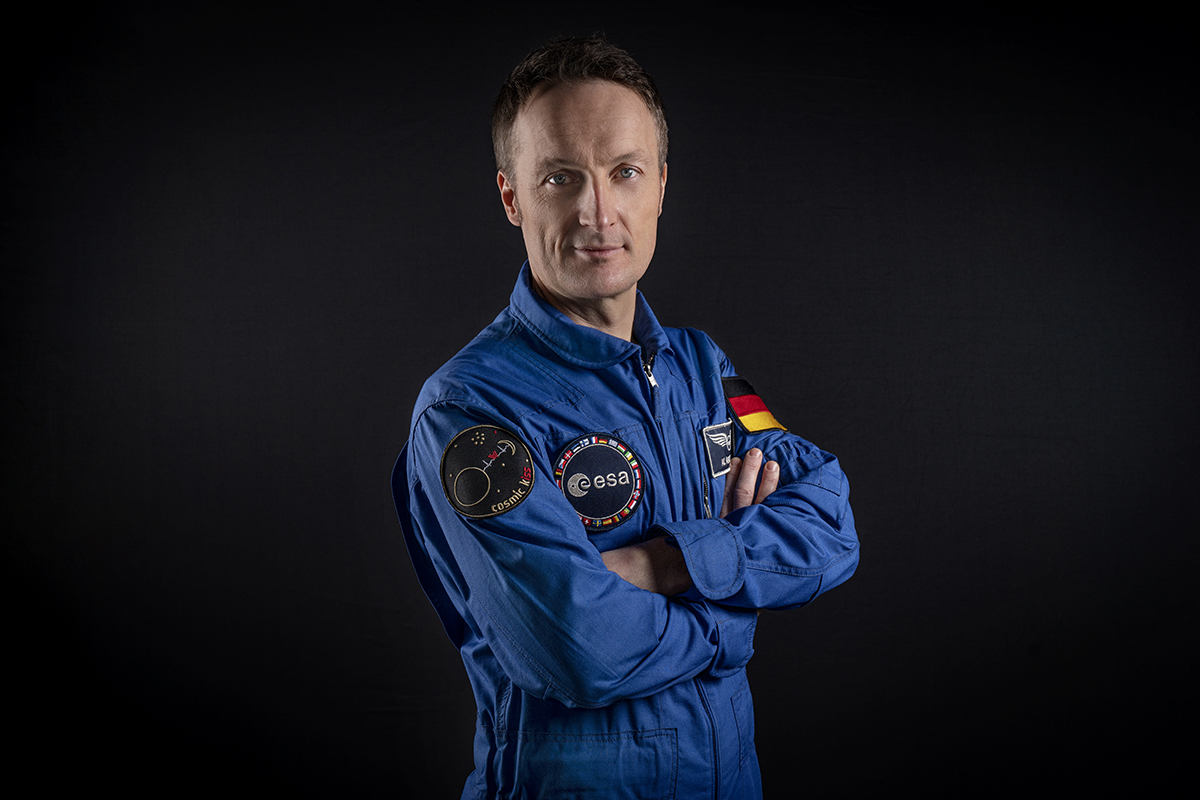ESA astronaut Matthias Maurer has been assigned for his first flight to the International Space Station during a meeting of representatives from the USA, Russian, Japanese, Canadian and European space agencies at the beginning of December.
Matthias’ mission is expected to begin in autumn 2021. He will be the second ESA astronaut to fly under NASA’s Commercial Crew Programme and is expected to be launched from the agency’s Kennedy Space Center in Florida, USA, as part of SpaceX Crew-3, along with NASA astronauts Raja Chari and Thomas H. Marshburn.
The mission will see the German ESA astronaut live and work in orbit for roughly six months, carrying out vital science and operations on behalf of researchers and international partners worldwide.
One year, two flights

ESA astronauts Matthias Maurer and Thomas Pesquet at SpaceX facility in USA.
ESA Director General Jan Wörner looks forward to Matthias’ inaugural mission and says the International Space Station is a shining symbol of what can be achieved when nations from around the world work together.
“The work we do on the International Space Station helps improve life on Earth as we go forward to the Moon,” he says.
“Two European missions in 2021 will enable us to carry out even more vital science and research in collaboration with our international partners. I’m delighted to see this great collaboration continuing more than 20 years after the first crew was launched.”
Matthias officially joined ESA’s Astronaut Corps in 2015 and is the only ESA astronaut yet to fly to space. ESA Director of Human and Robotic Exploration David Parker says his flight, and the flight of ESA astronaut Thomas Pesquet before him, stands testament to a strong commitment to European space exploration shown by Member States in context of ESA’s ministerial conference in 2019.
“With a 30% increase in annual investment we are able to continue European flights to the Space Station at the rate of at least one per year, ensuring Europe is well represented in space.
“The recent Memorandum of Understanding with NASA also provides three opportunities for European astronauts to fly to a new lunar outpost known as the Gateway, where they will live and work in orbit around the Moon for the first time. We are entering an exciting new era for space exploration in which Europe will play a key role.”
A declaration of love for space
Alongside his official assignment, Matthias Maurer also revealed the name of his first space mission: Cosmic Kiss. He describes this carefully selected mission name as a “declaration of love for space”.

Cosmic Kiss mission logo.
“It communicates the special connection the Station provides between Earth’s inhabitants and the cosmos,” Matthias explains. “It also conveys the value of partnership in exploring farther to the Moon and Mars, alongside the need to respect, protect and preserve the nature of our home planet as we seek a sustainable future on Earth.”
“I look forward to building on the curiosity and knowledge of those who went before me, and sharing my own experiences as an ambassador for Europe in orbit,” he adds.
Creating the perfect patch
In developing the Cosmic Kiss mission patch, Matthias took inspiration from the Nebra sky disc (“Himmelsscheibe von Nebra”) – the oldest known realistic illustration of the night sky – as well as the Pioneer plaques and Voyager Golden Records that were sent into the unknown carrying messages from Earth.
“These artefacts show a fascination with space that spans the ages. Since the beginning of time, humans have looked skyward for knowledge about the origins of life, the Universe,” he says.

Cosmic Kiss mission patch.
The mission patch features several cosmic elements including Earth, the Moon and the Pleiades star cluster. It also depicts Mars, one of ESA’s three key destinations for exploration over the next 10 years, as a small red dot beckoning in the distance. However, its most prominent feature is a simplified, almost heart-like International Space Station, connected through a human heartbeat that stretches from Earth to the Moon.
About Matthias
Originally from the southwest German state of Saarland, Matthias has studied in four different countries, gained a doctorate in materials science engineering and achieved national recognition for outstanding research.

ESA astronaut Matthias Maurer. Credit: ESA-N.Fischer
In 2016 he participated in the NASA NEEMO 21 analogue mission, spending a total of 16 days underwater as part of a crew testing exploration strategies and tools for future Mars missions. He has also participated in sea survival training off the coast of China with fellow ESA astronaut Samantha Cristoforetti and seven Chinese Taikonauts, and taken part in several geological field trainings related to future moon exploration.
Before his mission assignment, Matthias was based at ESA’s Astronaut Centre in Cologne, Germany where he was project managing the development of ESA’s future Luna Moon simulation facility.
He is passionate about the opportunity to combine a love of science and technology with international collaboration and adventure, and looks forward to sharing a taste of his home region while in orbit following a recent competition to select a Saarland dish for space.
Find out more about Matthias here.



